By Blake Nielson, Matthew Webb, Sara Freeman
Is L-368,899 Able to Replace ALS-II-69 as a Human-Selective Oxytocin Receptor Antagonist?
Is L-368,899 Able to Replace ALS-II-69 as a Human-Selective Oxytocin Receptor Antagonist? PDF File
Introduction
- Oxytocin and vasopressin are two hormones that act in the brain to modulate social functions in both humans and animals.
- Oxytocin acts in the brain by binding to the oxytocin receptor, a G-protein coupled receptor. Oxytocin also has an affinity to vasopressin receptors, since oxytocin and vasopressin have similar chemical structures.
- Therefore, it is important to develop and validate selective drugs to target the oxytocin receptor for research purposes.
- Compound L-368,899 (or the “Merck compound”) is a commercially-made drug used as an oxytocin antagonist, but there is limited evidence for its effectiveness.
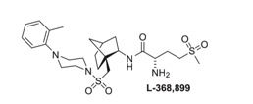
- ALS-II-69 (or the “Smith compound”) is a novel oxytocin antagonist that was provided by a collaborator, who has changed careers and is no longer synthesizing it .
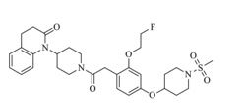
Methods
- Fresh frozen, postmortem human brain specimens (provided by the NIH NeuroBioBank) were sliced using a cryostat at -15°C at 20 µm sections and mounted to microscope slides.
- The human substantia nigra is known to contain a high amount of oxytocin receptors and will be used as our source of oxytocin receptors.
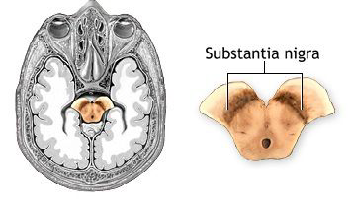
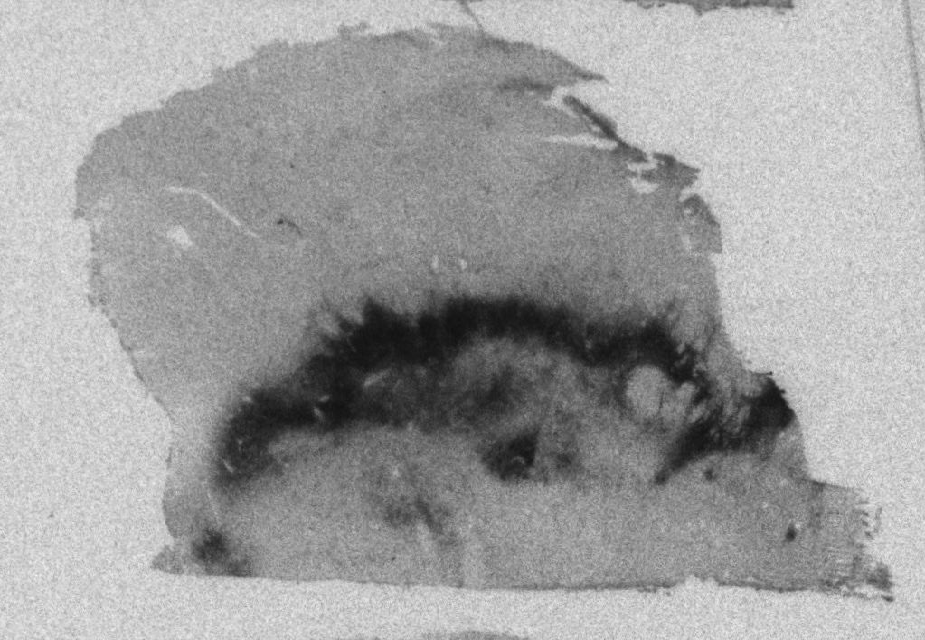
- The human primary visual cortex is known to contain a high amount of vasopressin receptors and will be used for our vasopressin receptor assays.
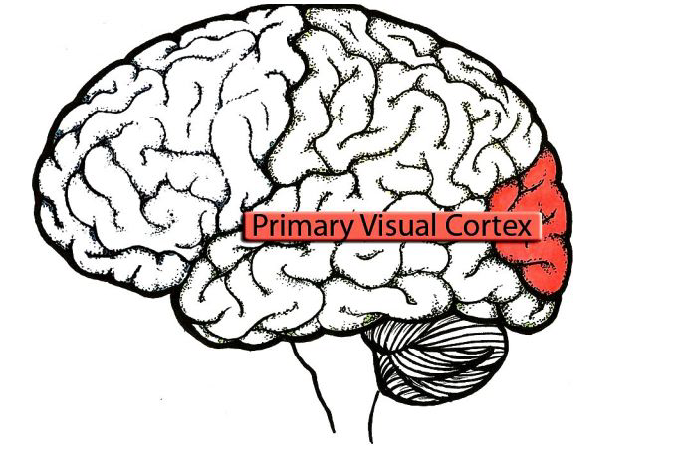
- We will use competitive binding autoradiography: increasing concentrations of each competitor ligand (either the Merck or Smith compounds) will be incubated on the tissue with one of the commercially available radioligands: 125I-ornithine vasotocin analog for oxytocin receptors and 125I-linear vasopressin antagonist for vasopressin. We will measure radioligand displacement.
Expected Results
- This approach has been used previously in prairie vole brains (Figure 1).
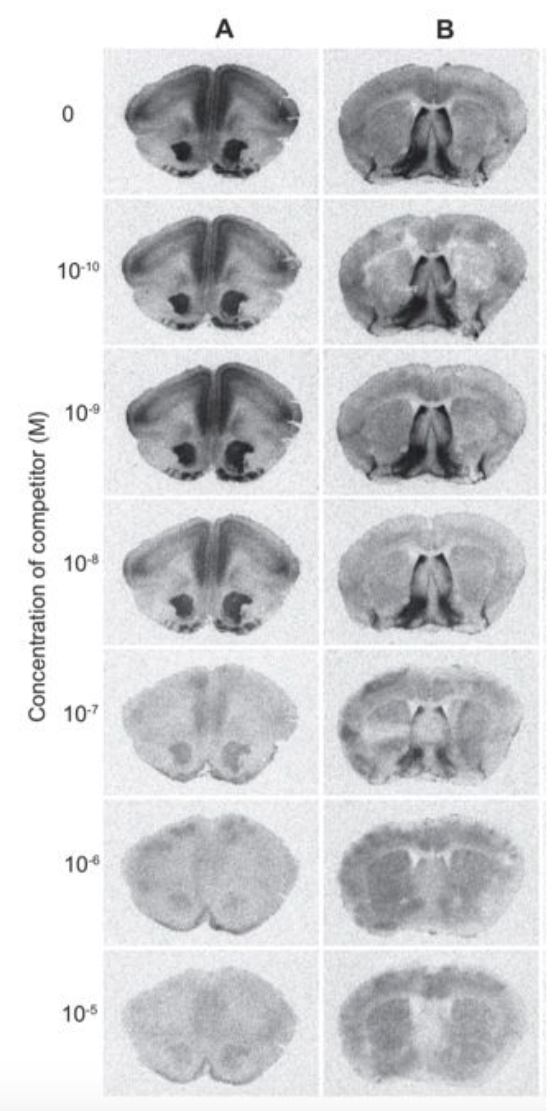
Figure 1 - Prairie vole brain sections showing the ability of ALS-II-69 to displace the oxytocin receptor radioigand (A) and the vasopressin receptor radioigand (B) with increasing concentrations. - The higher the concentration of antagonist, the less visible oxytocin and vasopressin receptors are due to competitive binding with the radioligands.
- We will repeat this approach using human brain sections.
- We will quantify the receptor density to generate competition curves, similar to the ones shown in Figure 2. This will allow us to directly compare the affinity and selectivity of the Merck and Smith compounds for the human oxytocin and vasopressin receptors.
![Log [1], M compared to % maximum binding for Rodent OTR and Rodent V1aR.](/biology/images/burs/fall-2020/nielson-and-webb-07.png)
![Log[3], M compared to % maximum binding for Human OTR and Human V1aR.](/biology/images/burs/fall-2020/nielson-and-webb-01.png)
Figure 2 - Example of a nonselective competition curve (top) and a selective competition curve (bottom).
Conclusions
- We hypothesize that L-368,899 will bind selectively to human oxytocin receptors and will not show a high affinity to human vasopressin receptors.
- Once the pharmacological properties of L-368,899 are confirmed, we can start using L-368,899 as an antagonist to map oxytocin receptors in the human brain with confidence that it binds selectively.
References
- Aaron L. Smith, Sara M. Freeman, Ronald J. Voll, et al. Carbon-11 N-methyl alkylation of L-368,899 and in vivo PET imaging investigations for neural oxytocin receptors Bioorganic & Medicinal Chemistry Letters 23 (2013) 902–906
- Aaron L. Smith, Sara M. Freeman, Jeffery S. Stehouwer, et al. Synthesis and evaluation of C-11, F-18 and I-125 small molecule radioligands for detecting oxytocin receptor. Bioorganic & Medicinal Chemistry Volume 20, Issue 8, 15 April 2012, Pages 2721-2738.

